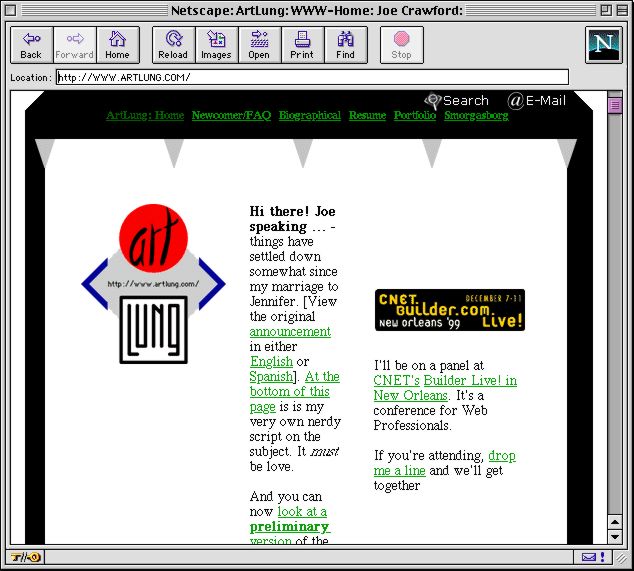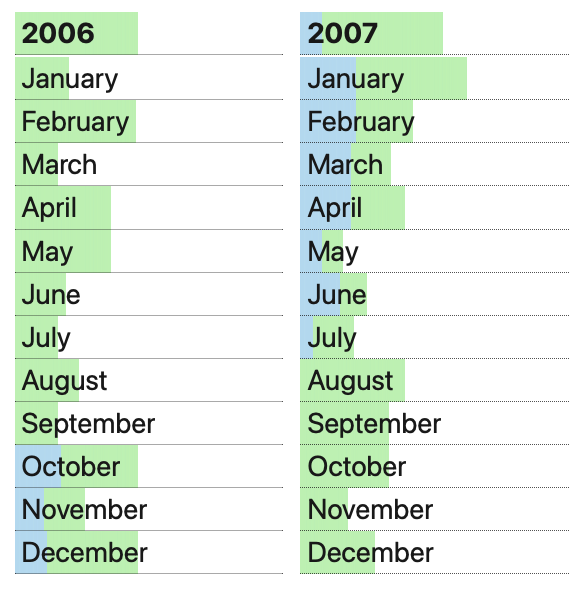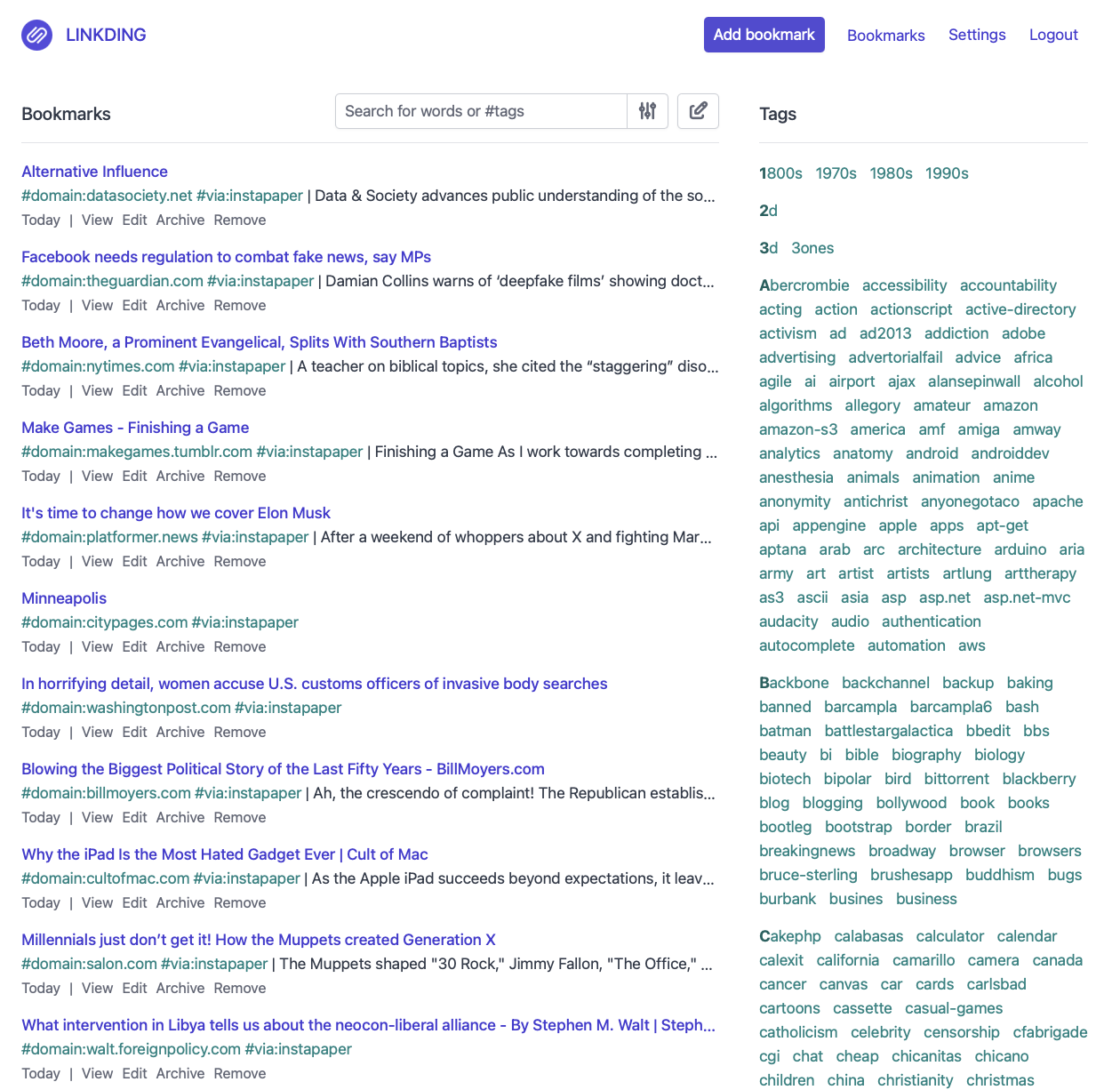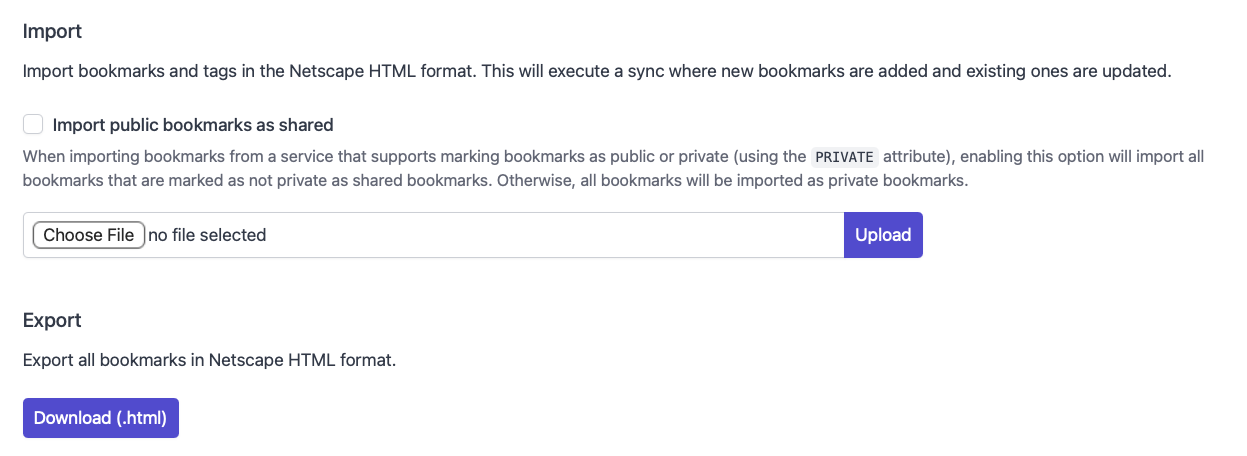When I worked as a respiratory therapist part of my responsibilities was to keep flowsheets for the mechanical ventilators I worked on. That’s a record of what the machine was doing with a time log. And when I gave a breathing treatment to an asthma patient I recorded the details of that treatment, the time, the before, the after, and anything noteworthy about it.
We keep logs and journals and captain’s logs to know what the heck happened in the past. They’re our memory. I started my blog in 2001, in February.
It turned out my website was a good way to remember things. When I blogged about a website, or a video I watched, or my own experiences, I remembered it. And because I’ve maintained the website over the years and not deleted many things, I still have them. There’s this idea of websites as “digital gardens,” written about by Maggie Appleton. I never quite thought of my website as a garden, though I do think about friendship as a kind of garden.
But the links add up. When I first started using web browsers, which would be back in the days of Netscape 2 and 3.

I kept my bookmarks in Netscape 3, and then 4. And because most of my web browsing was at the same computer, my bookmarks were always there. I never had to worry much about losing links I had saved.
In 2004 I started using a service called del.icio.us and that was terrific for managing links. It used tags to organize links. It became an amazing way to learn about new stuff from the other users. I think that’s the first time I started moving things away from my own website and into a silo. I announced and pointed my users at my del.icio.us account in 2005. I could bookmark things to delicious and view them on any computer.
Today, in 2024, when you export your bookmarks from the Safari browser on a Mac, and you read the code of the resulting file named Safari Bookmarks.html, it begins like this:
<!DOCTYPE NETSCAPE-Bookmark-file-1>
<HTML>
<META HTTP-EQUIV="Content-Type" CONTENT="text/html; charset=UTF-8">
<Title>Bookmarks</Title>
<H1>Bookmarks</H1>
<DT><H3 FOLDED>Favorites</H3>
Netscape was purchased by America Online. Netscape begat Mozilla and Firefox and Netscape Communications died. But that first line, that reads <!DOCTYPE NETSCAPE-Bookmark-file-1> shows that Safari is haunted by the spirit of the Netscape Bookmarks file.
I used del.icio.us for many years to store my bookmarks not in a bookmark file but “on the web.” In the “cloud” one might say now. Over a span between 2005 and 2006 I used PESOS to copy my bookmarks from that site and into mine. One can see this on my visualization page.

By 2010 Delicious has been acquired by Yahoo! and as often happens with clever small companies acquired by large ambitious ones, it was soon to be shuttered.
I used Pinboard for many years as a replacement. But my zeal for managing my bookmarks dwindled. Apple products allowed bookmarks to be shared across devices. Chrome bookmarks could sync to and from any browser you logged into. Wherever I used a browser, my computer, and my phone, and my tablet–it was simple to get at my bookmarks. Services like Dropbox magnified that capability with text files shared from place to place.
I find myself wishing for something more like Delicious. Since the services shut down I solved the problem of managing links with emails to myself, or with text files which include lists of links to share, or read. I used Instapaper to “Read Later.” I can push things to a Kindle. I can use apps like Pocket. In the days I read twitter I pushed the links I shared to Twitter into Pinboard. The problem of this link diaspora is when I want to find something, it’s increasingly difficult to find it. I become reliant on search tools, which means Google or DuckDuckGo.
And the search tools–particularly Google–are getting worse. It’s harder to find things as algorithmically generated synopses come before actual results. The tool corrects me: “no, you can’t possibly mean that word, let me correct that for you,” I imagine the search engine saying. No, I really do want to see results which include the specific string of characters in “del.icio.us.”
Link management is no longer an unscratched itch for me.
And so I’ve been very pleased to be using a tool called Linkding.

Linkding looks a lot like what Delicious looked like. It’s very plain, and it allows for tagging. Tagging is an old idea now, though we more commonly think of them as #hashtags now. But originally it was a way for ideas to emerge. In one of my favorite talks: “Making Digital Durable: What Time Does to Categories” by Clay Shirky, from 2005. I highly recommend the video. In the talk he speaks about how Flickr and Delicious used tags, or rather, how their users did, and about the genesis of tagging.
This is the group mind modeling the group mind.
All that said, I am not making my instance of Linkding open to the web. I will not be sharing the 28,000 links I’ve put into it onto the web in a public manner. But I am already using it to look back at what has come before. I am able to search it and use it and am very pleased.
I wrote code (in PHP) to import my old bookmarks. And you didn’t misread that, it’s 28,000 links over the last 20 years. They come from my original links blog, and from Delicious, and from Instapaper, and from Twitter back when I backfilled those shared links into Pinboard, which I then backfilled into my link blog database. It’s a lot of things, but really, it’s straightforward from a programming point of view. It’s a simple POST to the REST API which Linkding provides by default. I have shared most of the code I wrote as a Gist in GitHub. It includes code in PHP to convert exported CSV from Instapaper to a JSON format that my poster code can use. And over the last 2 days and over many hours, every few seconds a link would be posted. And as of now, it’s finished.
It’s already yielding dividends. There’s enough text in the urls and titles of these links that I can search for things I’d long forgotten but are still useful. And it’s not bound up in someone else’s service. It’s all under my control on an instance that I’m running on a service called PikaPods, which so far, I like. Rather than having to configure a server and worry about spinning up instances under Amazon Web Services I can run a Pod with Linkding on it. Here’s their pitch:
Run the finest Open Source web apps from just $1/month
- Start free with $5 welcome credit 🤗
- Fully managed, no servers to administer
- No tracking, no ads, no snooping
- EU and US locations available
- Use your own domain
So far I like it. And at about a buck and a half a month I’m pleased to have a digital brain again that includes everything. It is not ad-supported. I have it set to be private, so in theory my usage won’t be tracked. I appreciate a service under my own control, that’s the essence of why the #IndieWeb means so much to me.
I am not locked into Linkding. Not really. Built into the settings screens is an option to export all my bookmarks. It’s a large file, over 7 megabytes of links, text, and tags.
The format of the file? It’s a Netscape HTML file.

That ancient format from a dead company means that I can take my links and do with them as I please.

six comments...
great piece! Ah, del.icio.us. That takes me back. Miss it. Did NOT know when you get your Safari bookmarks it still says Netscape! 🤯😂
Firefox exported file is named bookmarks.html and begins:
<!DOCTYPE NETSCAPE-Bookmark-file-1><!-- This is an automatically generated file.
It will be read and overwritten.
DO NOT EDIT! -->
<META HTTP-EQUIV="Content-Type" CONTENT="text/html; charset=UTF-8">
<meta http-equiv="Content-Security-Policy"
content="default-src 'self'; script-src 'none'; img-src data: *; object-src 'none'"></meta>
<TITLE>Bookmarks</TITLE>
<H1>Bookmarks Menu</H1>
Firefox too! Wow. Legacy Netscape stuff hahaha. Netscape was like probably the first browser I used. I remember testing sites I made on it
I’ve been planning to try Linkding. I don’t have have a high volume or high age of bookmarks like you.
I’m thinking with that many over such a long period, a lot of them must be 404? Does Linkding check that? Otherwise it might have been interesting to have your script check it.
It makes me think I should be leaning more toward a self-hosted Instapaper like Readeck.
Yes, there’s linker across my bookmarks. I’ve not written anything to check for downtime or to replace the links with internet archive editions but it is something I might do. There is also an open source tool called ArchiveBox which purports to do that.
It might be time. I think you’ve inspired me to finally tag and organise my own massive pile of bookmarks.